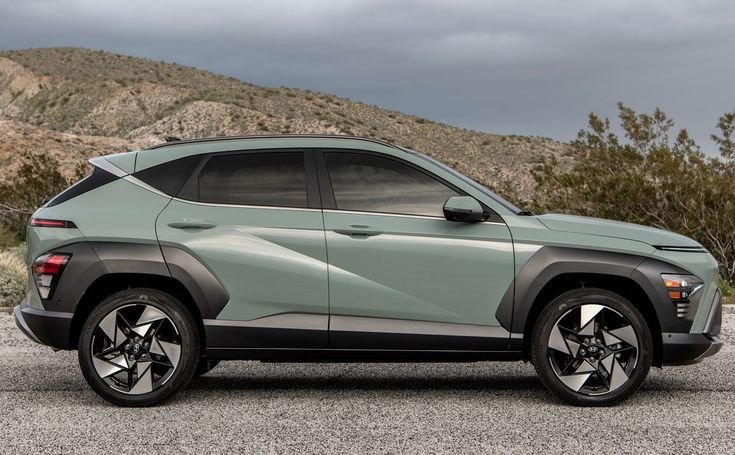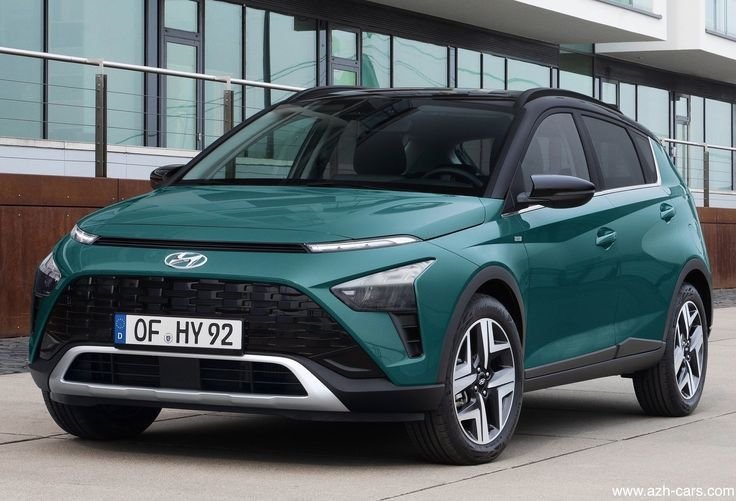The Hyundai Kona is a compact crossover SUV that has quickly become a popular choice among drivers looking for a blend of style, functionality, and advanced technology.
Since its debut in 2017, the Kona has received accolades for its sporty design, versatile performance, and comprehensive feature set.
This article delves into the distinctive features of the Hyundai Kona and explores essential considerations for insuring this versatile SUV.

Introduction to the Hyundai Kona
Design and Exterior
The Hyundai Kona boasts a bold and distinctive design that sets it apart in the crowded compact SUV segment.
Its exterior is characterized by sharp lines, a sleek profile, and a distinctive front grille. The Kona’s unique design elements include:
Two-Tone Roof: Available on select trims, the two-tone roof adds a touch of customization and sportiness.
LED Lighting: The Kona features sleek LED daytime running lights and available LED headlights, enhancing visibility and giving the vehicle a modern look.
Wheel Options: Various wheel designs, ranging from 16 to 18 inches, allow drivers to personalize their Kona’s appearance.
The Kona’s compact size makes it ideal for urban driving, while its elevated stance provides a commanding view of the road, combining the best aspects of a hatchback and an SUV.
Performance and Engine Options
The Hyundai Kona offers a range of engine options to cater to different driving preferences and needs:
2.0-Liter MPI Atkinson Engine: The base engine delivers 147 horsepower and 132 lb-ft of torque, paired with a six-speed automatic transmission. It provides a smooth and efficient driving experience, ideal for daily commutes and city driving.
1.6-Liter Turbocharged GDI Engine: Available on higher trims, this turbocharged engine produces 195 horsepower and 195 lb-ft of torque, mated to a seven-speed dual-clutch transmission. It offers spirited performance and quick acceleration, making the Kona more engaging to drive.
Electric Version (Kona Electric): The all-electric variant features a 201-horsepower electric motor and a 64 kWh battery, offering an impressive range of up to 258 miles on a single charge. The Kona Electric combines eco-friendliness with the practicality of an SUV.
All-wheel drive (AWD) is available as an option, enhancing traction and stability in various driving conditions, making the Kona a versatile choice for different environments.
Interior and Technology

Inside, the Hyundai Kona offers a comfortable and well-appointed cabin with a focus on technology and convenience:
Infotainment System: The Kona comes with a standard 8-inch touchscreen display, while higher trims offer a larger 10.25-inch touchscreen with navigation. Both systems support Apple CarPlay and Android Auto, ensuring seamless smartphone integration.
Digital Instrument Cluster: An available 10.25-inch digital instrument cluster provides customizable displays and essential driving information.
Wireless Charging: Select trims include a wireless charging pad for compatible smartphones, enhancing convenience.
Premium Audio System: The available Harman Kardon premium audio system delivers excellent sound quality for an immersive listening experience.
The Kona’s interior also includes high-quality materials, comfortable seating for up to five passengers, and a practical layout with ample cargo space.
The rear seats can be folded down to expand the cargo area, making the Kona suitable for various hauling needs.
Safety and Driver Assistance Features
Safety is a top priority for Hyundai, and the Kona is equipped with a comprehensive suite of advanced safety features and driver assistance technologies:
Forward Collision-Avoidance Assist (FCA): This system detects and helps prevent potential collisions with vehicles or pedestrians ahead by automatically applying the brakes if necessary.
Blind-Spot Collision Warning (BCW): Alerts the driver to vehicles in the blind spot, enhancing awareness during lane changes.
Lane Keeping Assist (LKA): Helps keep the Kona centered in its lane by providing steering assistance if the vehicle begins to drift.
Rear Cross-Traffic Collision Warning (RCCW): Warns the driver of approaching traffic from either side when backing out of parking spaces.
Driver Attention Warning (DAW): Monitors driver behavior and provides alerts if signs of drowsiness or inattention are detected.
These features, along with a robust body structure and multiple airbags, contribute to the Kona’s excellent safety ratings and provide peace of mind for drivers and passengers.
Insurance Considerations for the Hyundai Kona
Factors Influencing Insurance Costs
Insuring a Hyundai Kona involves several factors that can impact insurance premiums:
Vehicle Value: The Kona’s purchase price and cost of repairs can influence insurance rates. The more expensive the model and features, the higher the premiums.
Safety Features: The Kona’s advanced safety features and driver assistance systems may qualify for insurance discounts by reducing the risk of accidents.
Driver Profile: Individual factors such as age, driving history, location, and annual mileage play a significant role in determining insurance premiums.
Trim Level and Options: Higher trims with more features can lead to increased insurance costs due to the higher replacement value and repair expenses.
Insurance Coverage Options
When insuring a Hyundai Kona, comprehensive coverage options should be considered:
Liability Coverage: Protects against damage or injury caused to others in an accident.
Collision Coverage: Covers damage to the Kona in case of a collision with another vehicle or object.
Comprehensive Coverage: Protects against theft, vandalism, or damage from non-collision incidents like weather events.
Personal Injury Protection (PIP): Provides coverage for medical expenses for you and your passengers regardless of fault.
Uninsured/Underinsured Motorist Coverage: Provides protection if involved in an accident with a driver who lacks sufficient insurance.
Tips for Lowering Insurance Premiums
To potentially reduce insurance costs for the Hyundai Kona:
Safety Features: Ensure all safety features are active and well-maintained, as they may qualify for insurance discounts.
Bundle Policies: Insuring multiple vehicles or policies (such as home and auto) with the same insurer can lead to discounts.
Driver Discounts: Maintain a clean driving record and consider taking defensive driving courses to qualify for lower premiums.
Shop Around: Compare quotes from different insurers to find the most competitive rates tailored to your specific needs.
Usage Patterns: Limit annual mileage and use the Kona primarily for leisure rather than daily commuting to potentially lower premiums.
Conclusion
The Hyundai Kona stands out in the compact SUV market with its blend of stylish design, versatile performance, advanced technology, and comprehensive safety features.
Whether opting for the efficient base model, the spirited turbocharged variant, or the eco-friendly electric version,
the Kona offers a compelling package for a wide range of drivers. When considering insurance for the Kona,
understanding its unique attributes and selecting comprehensive coverage options tailored to its needs are crucial steps toward enjoying its benefits with confidence and peace of mind.
In summary, while insuring a Hyundai Kona may involve various considerations due to its range of features and potential repair costs,
the potential for savings through comprehensive coverage and leveraging insurance discounts can make it a worthwhile investment.
Whether you’re drawn to its modern design, advanced technology, or versatile performance, the Kona continues to set the standard for what a compact SUV should offer on the road.
4o